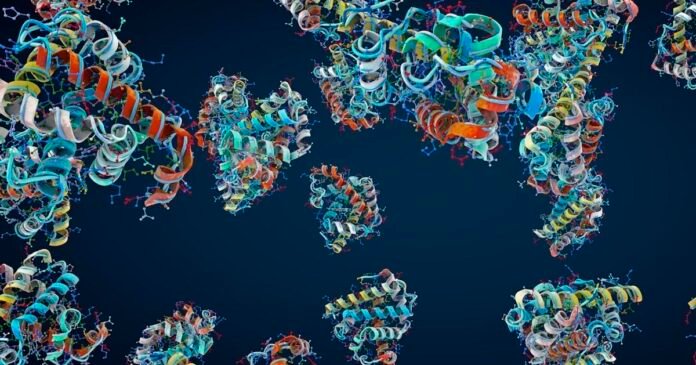One of this year’s Nobel laureates in physics, Geoffrey Hinton, who pioneered work on the neural networks that underpin artificial intelligence, has warned that machines could one day become smarter than humans. Maybe. But this year’s Nobel Prize in Chemistry honored a real-world example of how AI is helping people today with astonishing discoveries in protein structure that have far-reaching applications. This is a development worth enjoying.
Proteins are the main players in biology. As the Nobel Committee noted, proteins control and direct all chemical reactions that form the basis of life. Proteins also function as hormones, signaling substances, antibodies and building blocks of various tissues.” In the human body they are necessary for the structure, function and regulation of tissues and organs. All proteins start with a chain of up to twenty types of amino acids, strung together in a sequence encoded in DNA. Each chain folds into a unique structure, and those shapes determine how proteins interact with other molecules.
People also read…
Proteins look like a tangled ball of string and have a complex and precise design of moving parts that are associated with chemical events and bind to other molecules. Antibodies are proteins produced by the immune system that bind to foreign molecules, including those on the surface of an invading virus, such as the spikes on the coronavirus that cause COVID-19.
In the late 1950s, Cambridge University researchers John Kendrew and Max Perutz successfully used a method called X-ray crystallography to produce the first 3D models of proteins. In recognition, they received the Nobel Prize for Chemistry in 1962. Over the next half century, the quest to document protein structures remained laborious and slow. It can take a PhD student four to five years to discover a single protein structure. Before AI, the field’s central repository contained some 185,000 experimentally solved protein structures.
This year’s Nobel Prize in Chemistry went to three scientists who revolutionized the field. David Baker of the University of Washington has built entirely new types of proteins. Demis Hassabis and John Jumper of DeepMind, a British-based company that is part of Alphabet, Google’s parent company, have developed an AI and machine learning model that can predict the structure of proteins and decode the amino acids that make up every protein exists. The model, AlphaFold, can do in minutes what once took years.
AlphaFold uses neural networks that can pinpoint patterns in massive amounts of data. The system was trained based on the vast information in the databases of all known protein structures and amino acid sequences. AlphaFold has predicted more than 200 million protein structures, or nearly all the cataloged proteins known to science, including those in humans, plants, bacteria, animals and other organisms. The AlphaFold Protein Structure Database makes this data freely available.
To design new drugs and vaccines, scientists need to know what a protein looks or behaves like. The result of AlphaFold is a prediction that can accelerate biomedical research. …
The AlphaFold blog tells the story of scientists searching for a better vaccine against malaria, a disease that affects 250 million people every year and causes more than 600,000 deaths. Because malaria is caused by a shape-shifting parasite, vaccine researchers had long struggled to characterize the structure of a single surface protein to target to interrupt the infection. Then AlphaFold’s prediction of the correct structure brought this into focus. Matthew Higgins from the University of Oxford said the breakthrough helped his team decide which pieces of the protein to put in the vaccine, training the body’s immune system to detect it and act. This helped advance his research from “a basic science phase to the preclinical and clinical development phase.”
Anyone who has used ChatGPT knows that AI is not always correct – and the malaria scientists found that some 3D visualizations of proteins were inaccurate. But AI will only get better over time. AlphaFold’s efforts are already expanding to create precise visualizations of how proteins interact with other biomedical structures, such as nucleic acids.
In the coming years, the dangers of AI must be confronted and safeguards considered. There are undoubtedly risks when powerful technology falls into the hands of malicious actors.
But for now, AlphaFold shows that AI can boost existing knowledge for the benefit of humanity. The Nobel Committee noted that, thanks to these advances, “researchers can now better understand antibiotic resistance and image enzymes that can break down plastic.” And more will follow.





